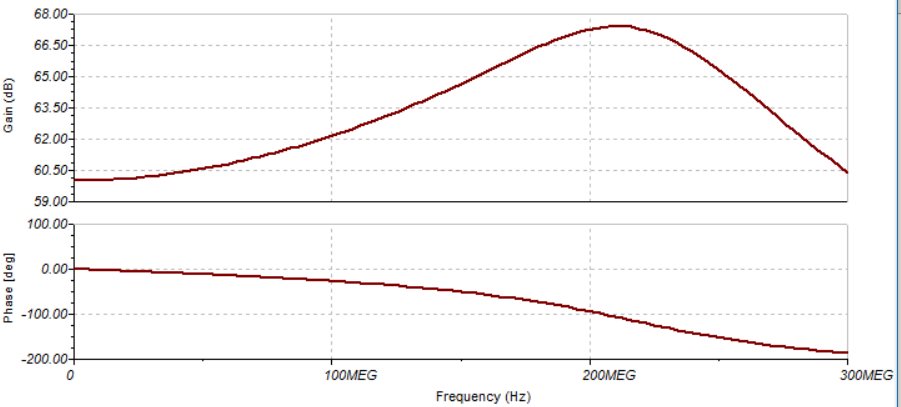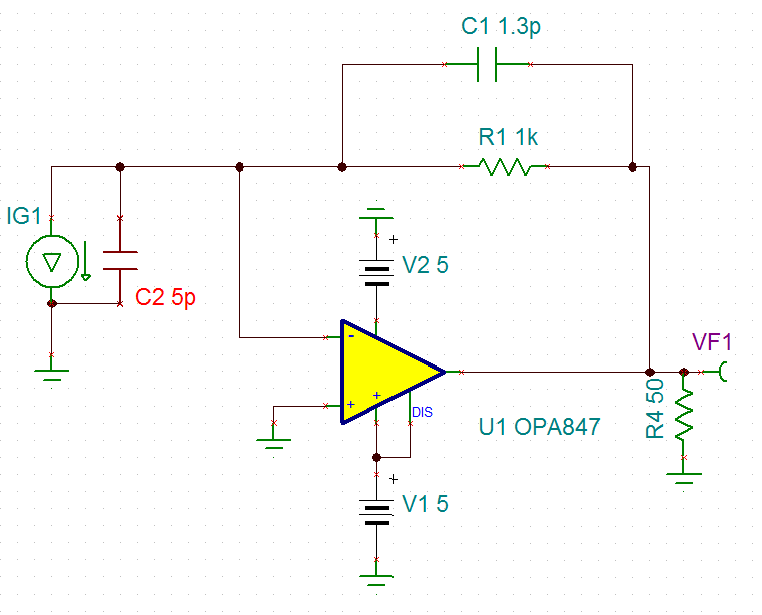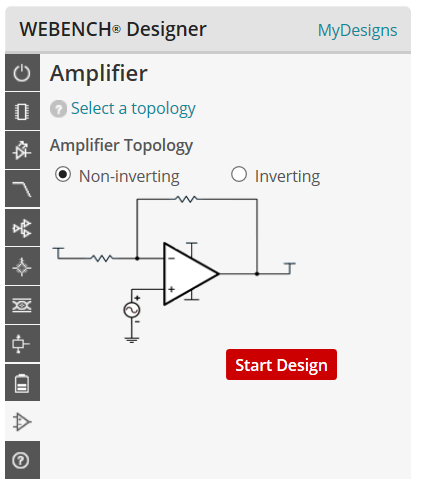Other Parts Discussed in Thread: TINA-TI,
Tool/software: TINA-TI or Spice Models
Dear TI:
When I simulate a TIA based on OPA847 with TINA,on the frequency response curve,there is a peak on 200MHz .
I use a current source and a capacitor to imitate a PIN Photo diode,5972 from hamamstsu.
so I have some questions about the peak
1.Why the peak could appear on the frequency response curve?
2.How many components have the relationship with the peak?
3.How to confirm the frequency and amplitude of the peak?
Please give me some explanation about theory,
if you can give some mathematical formulas,that is so good.
thank you very much






